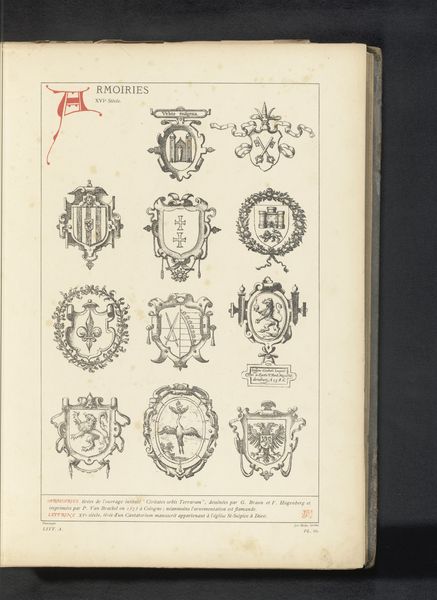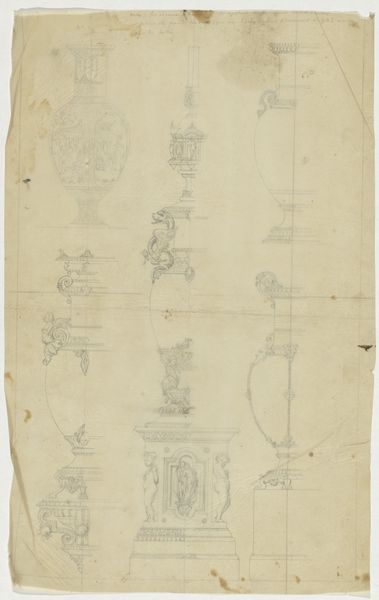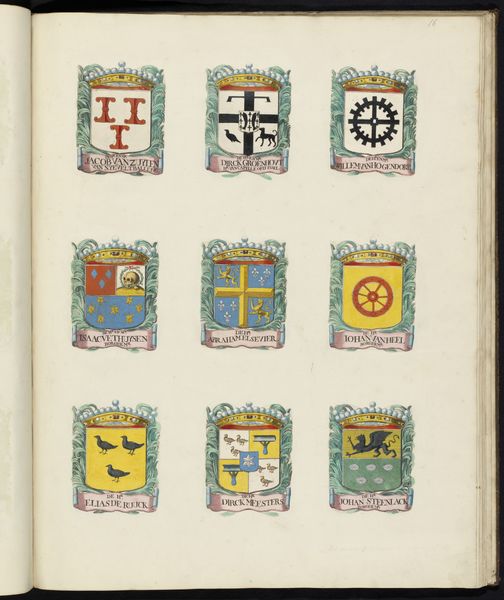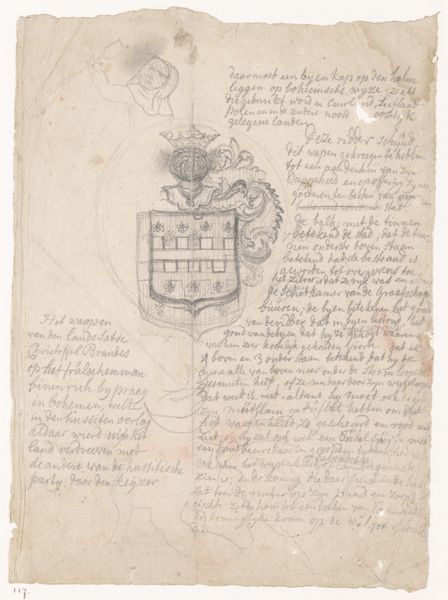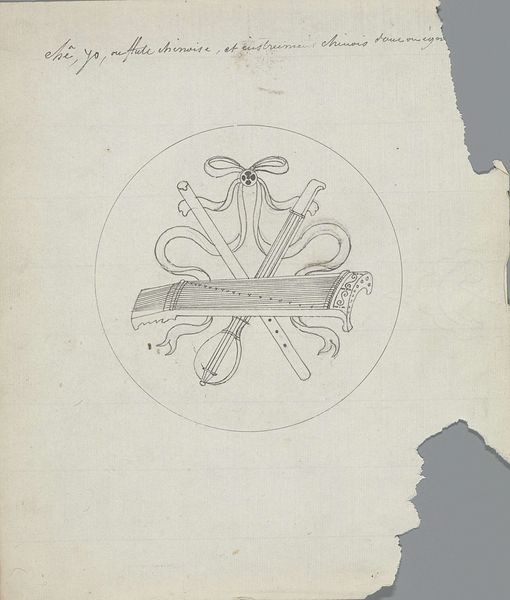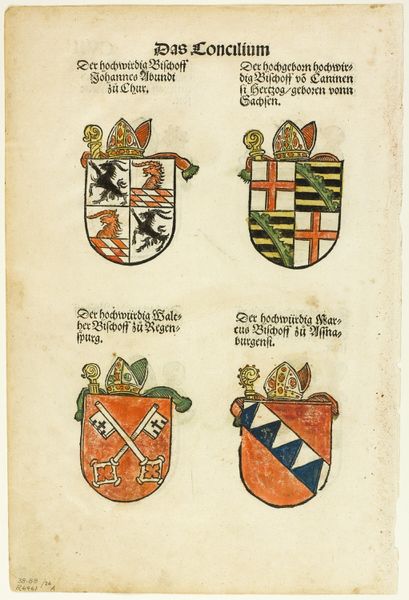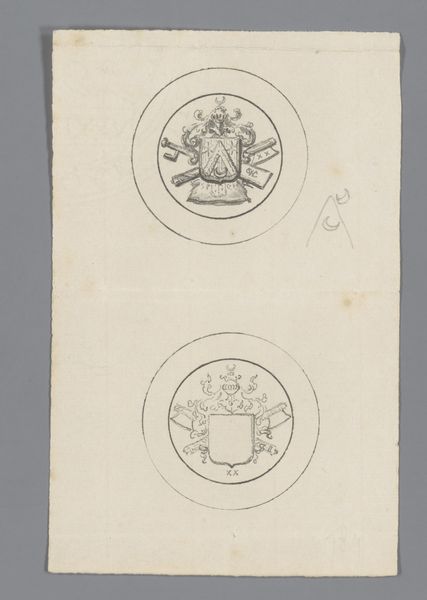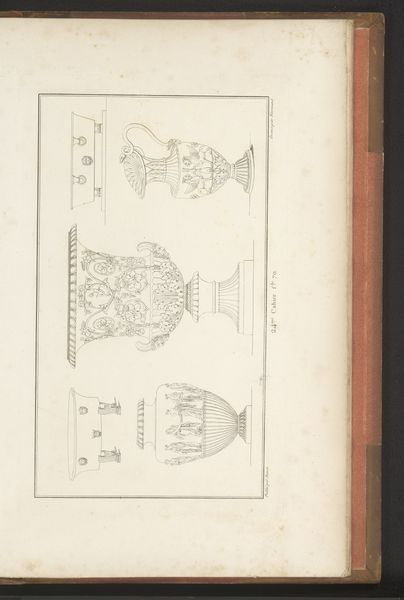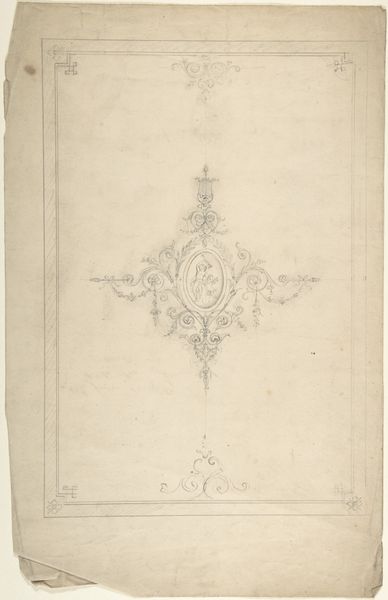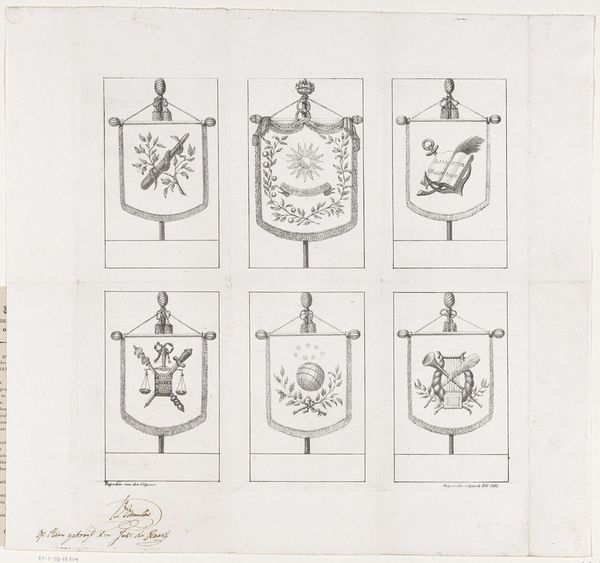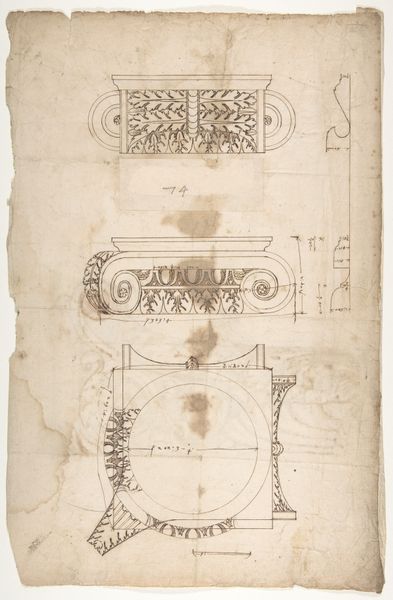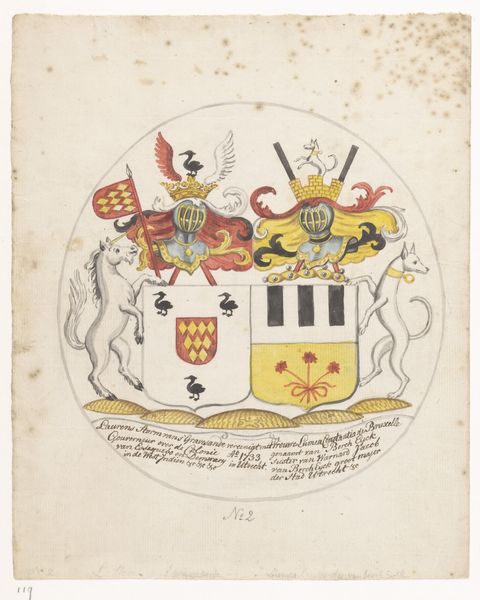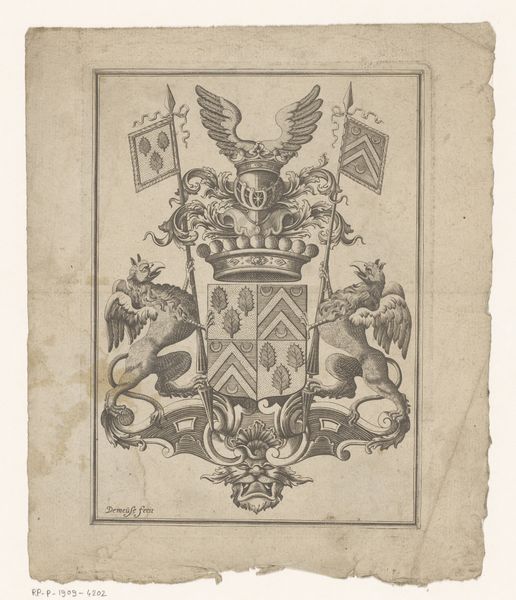
drawing, paper, ink
#
portrait
#
drawing
#
paper
#
ink
#
geometric
#
line
#
academic-art
#
miniature
Dimensions: 182 mm (height) x 115 mm (width) (bladmaal)
Editor: So, this is Martinus Rørbye’s "Forskellige våbenskjold og devicer," a drawing in ink on paper from 1825-1826. It's a page filled with heraldic shields and devices. The meticulous detail in these miniature emblems is quite striking. What do you see in this work, considering its historical context? Curator: Well, this drawing offers a fascinating glimpse into the cultural landscape of 19th-century Denmark. Rørbye, though known for his Romantic landscapes, was clearly engaged with the symbols of power, lineage, and identity prevalent at the time. These aren’t just aesthetic designs, they reflect a very particular societal structure. Do you notice any recurring symbols? Editor: Yes, there are several: stars, crescent moons, what appear to be castle towers, and animal figures... Why would an artist like Rørbye be interested in depicting them? Was he commissioned to create them? Curator: That's an interesting point. While the purpose isn't explicitly known, such detailed drawings could serve multiple functions. Perhaps he was documenting existing coats of arms, or maybe even proposing new ones. Consider the socio-political climate then - the rise of nationalism, the importance of aristocratic heritage. These images weren't merely decorative, they represented status and belonging within a specific hierarchy. And that kind of representation always has inherent politics. Editor: I see. So, by meticulously drawing these symbols, Rørbye was participating in, and perhaps commenting on, the visual language of power and social identity in his time? It's not just about pretty designs; it's about the institutions and histories they represent. Curator: Precisely. The choice of ink, the precision of line—these elements amplify the gravitas associated with heraldry. And think about where this was housed; the SMK, now a public museum, was in Rørbye’s time, a royal collection. Editor: That gives it a completely different meaning, knowing it was meant to legitimize status through institutions. I didn't consider the piece in the light of these social institutions. Curator: Art gains incredible depth once connected to historical understanding!
Comments
No comments
Be the first to comment and join the conversation on the ultimate creative platform.
